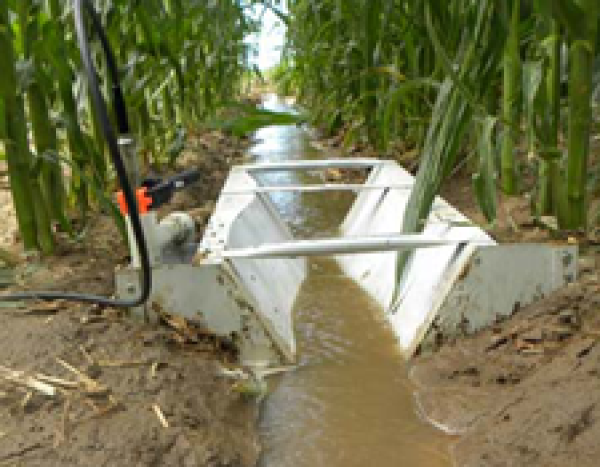This website uses a variety of cookies, which you consent to if you continue to use this site. You can read our Privacy Policy for
details about how these cookies are used, and to grant or withdraw your consent for certain types of cookies.
Using Parshall Flume in Irrigation Channels
We see Parshall Flumes at wastewater treatment plants measuring sanitary flows so often that sometimes we forget the original reason that the Parshall Flume was developed – to measure irrigation flows. With 22 sizes available, Parshall Flumes are capable of measuring flows from 0.005 cfs [0.1416 l/s] to 3,280 cfs [92,890 l/s], with throat sizes range from 1” to 50’
At the beginning of the 20th century irrigation flows were typically measured by one of three devices: weirs, orifice plates, and rating flumes. All three had their drawbacks and it was to address these that Dr. Parshall began development of his Improved Venturi Flume. The flume that resulted proved to be highly adaptable to a variety of installation conditions, had good resistance to the effects of submergence in larger sizes, and - under free-flow conditions - allowed for the flow rate to be determined by a single head measurement. These attributes are well suited to the variable conditions commonly found when measuring flows in irrigation channels.

The common material of construction for Parshall Flumes when used for irrigation flows / water right is galvanized steel. The primary factor here is the upfront cost. Unfortunately, once the protective galvanizing coating is breached, rust can quickly set in. Cold galvanization spot touch-up can extend the life of a galvanized steel Parshall Flume, but when the cost of preventative maintenance and inspections is considered, fiberglass construction (which is the dominant material in wastewater applications) can be more cost effective. Keep in mind, though, that if periodic burn back of vegetation is planned, unless a fiberglass flume is fabricated from fire retardant resins, they can be damaged by the extreme heat generated by brush fires.

One drawback to the use of Parshall Flumes in existing channels - or channels which cannot be modified - is the need to accommodate the drop through the flume. As flow passes through the flume and transitions from the inlet to the throat, the floor drops. This drop, and subsequent partial recovery in the discharge section, can make it difficult to fit the flume into some applications.
In applications where the channel floor is relatively flat it may not be possible to install a Parshall Flume so that free-flow conditions exist. In those instances a Cutthroat, Trapezoidal, or even a RBC flume may be a better fit. It is important to remember that although the Parshall Flume is the most recognized and commonly used flume, there can be times when other flumes may better suit an application.
Related Blog Posts
Explore more insights in our blog.

LOCATIONS IN ATLANTA, GA & BOISE, ID




